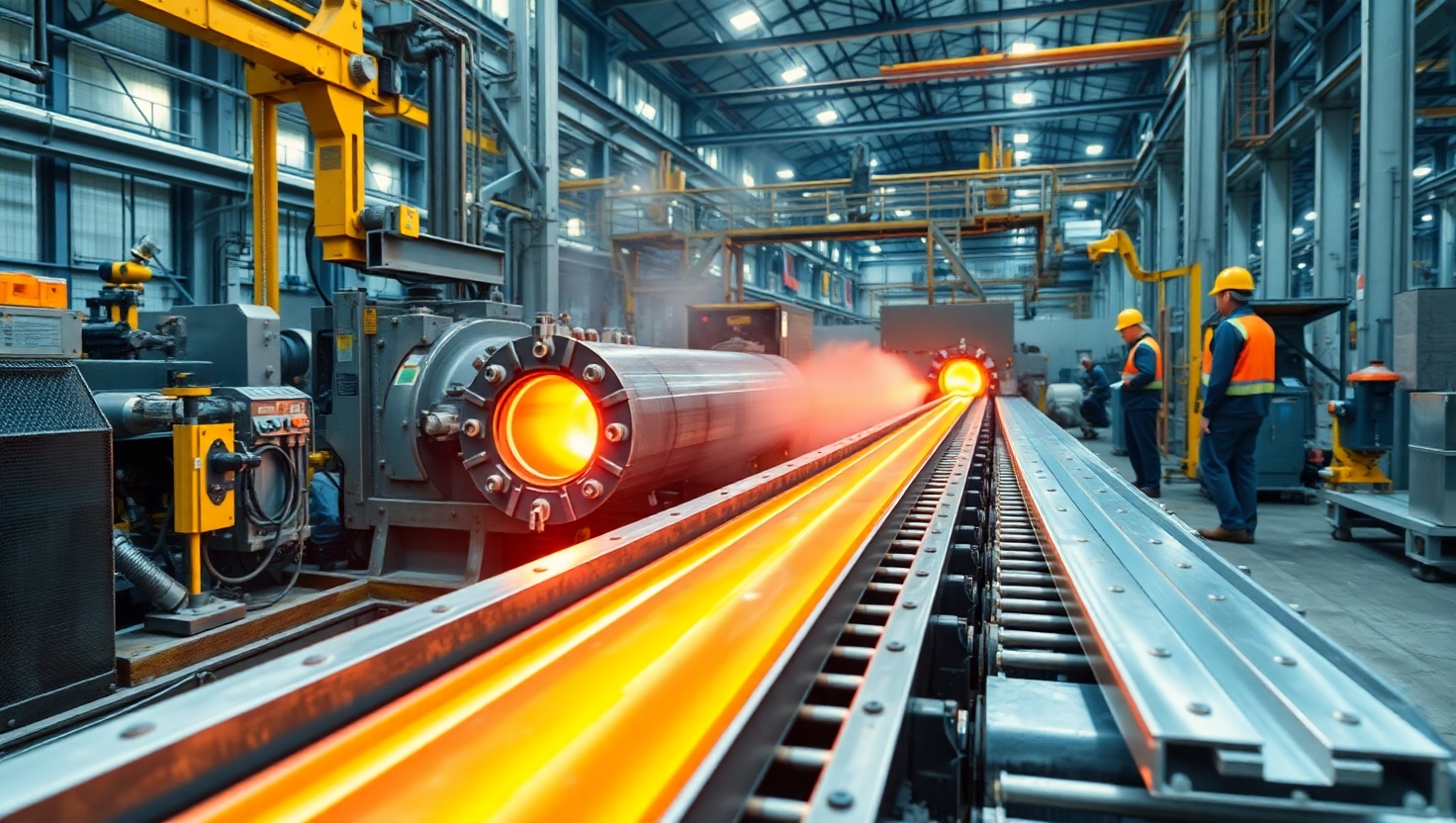Aluminium Extrusion Process Explained with Examples
Published by: ALUTimes | Date: July 7, 2025
Introduction
Aluminium extrusion is one of the most versatile and widely used processes in the metal manufacturing industry today. From window frames and car parts to solar panels and aircraft structures, aluminium extrusions are everywhere. But what exactly is the aluminium extrusion process? How does it work, and why is it so important in 2025? In this article, we’ll break it down step-by-step and provide real-world examples that help explain this remarkable process.
What is Aluminium Extrusion?
Aluminium extrusion is a process used to transform aluminium alloy into objects with a definitive cross-sectional profile. Using a powerful hydraulic press, aluminium is forced through a die that shapes it into the desired form. The resulting extruded material is strong, lightweight, and perfect for structural and decorative applications.
Key Steps in the Aluminium Extrusion Process
1. Preparing the Aluminium Billet
The process starts with a cylindrical log of aluminium called a billet. The billet is preheated to around 400-500°C to soften it without melting.
2. Extrusion Through the Die
The heated billet is then placed into the extrusion press. A hydraulic ram pushes it through a steel die, shaping the aluminium into the required profile — such as T-sections, hollow tubes, or custom designs.
3. Cooling and Quenching
After extrusion, the hot aluminium profile exits the press and is rapidly cooled, usually using water or air quenching. This ensures the material maintains its shape and strength.
4. Stretching and Cutting
The extruded aluminium is stretched to straighten it and then cut into specific lengths as required by the application.
5. Heat Treatment (Optional)
Depending on the alloy and intended use, the extrusions may undergo heat treatment to improve mechanical properties like hardness and strength.
6. Surface Finishing
Finishing processes like anodizing, powder coating, or painting can be applied for aesthetics and corrosion resistance.
Real-World Examples of Aluminium Extrusions
- Construction: Window and door frames, curtain walls, and roofing systems
- Automotive: EV battery enclosures, bumpers, chassis frames
- Solar Energy: Mounting systems and structural supports for panels
- Aerospace: Lightweight fuselage and support structures
- Furniture: Modular tables, shelves, display systems
Advantages of Aluminium Extrusion
- High strength-to-weight ratio
- Corrosion-resistant and durable
- Flexible design options
- Excellent thermal and electrical conductivity
- Fully recyclable with low environmental impact
Popular Aluminium Extrusion Alloys
In India, the most commonly used aluminium extrusion alloys include:
- 6061: High strength and weldability, used in structural applications
- 6063: Best for architectural applications due to excellent finish
- 6082: High mechanical strength and good corrosion resistance
Top Aluminium Extrusion Companies in India (2025)
- Jindal Aluminium Ltd
- Banco Aluminium
- Century Extrusions
- Global Aluminium Pvt. Ltd
- GALCO Group
- Bhoruka Extrusions Pvt. Ltd
Emerging Trends in 2025
- Use of AI and automation in extrusion lines
- Lightweighting in EVs driving demand for custom extrusions
- Integration with solar and smart infrastructure projects
- Growth of export-oriented aluminium extrusion SMEs
Conclusion
The aluminium extrusion process is a critical part of India’s industrial growth, especially in 2025. With rising demand from construction, EVs, and solar energy, manufacturers are scaling operations and adopting smarter technologies. Whether you are a buyer, manufacturer, or industry observer, understanding this process helps you appreciate the innovation behind everyday aluminium applications.
Disclaimer
All information in this article is based on publicly available sources and industry research. ALUTimes is not responsible for any business decisions made using this content. For accuracy, always consult manufacturers or official data sources.

